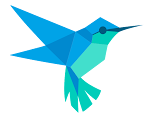Learn How to Create, Update, Delete and View Data using Hive Database.
What is Hive database In Flutter?
Apache Hive is a software project that enables users to perform data analysis and querying on large datasets stored in Hadoop Distributed File System or other compatible storage systems.
It was developed by Facebook and later contributed to the Apache Sofware Foundation.
In Flutter Hive is lightweight and blazing fast key - value database written in pure Dart.
Inspired by Bitcask.
HIVE: Hierarchy of International Vengeance and Extermination.
What are Boxes in Flutter Hive Database?
All data stored in Hive is organized in boxes. A box can be compared to a table in SQL, but it does not have a structure and can contain anything. boxes are a great way to organize your data. Boxes can also be encrypted to store sensitive data.
Hive is a lightweight and fast key-value database solution that is cross-platform (runs on mobile, desktop, and web) and is written in pure Dart. This gives it an instant advantage over SQLite, which doesn’t support Flutter web — Hive has no native dependencies, so it runs seamlessly on the web.
Getting started with Hive
Let's create a simple application that stores information about our users and allows us to add, update, read, and delete data.
flutter create todo_applicationAdd the Hive and hive_flutter packages to your pubspec.yaml file:
dependencies:
flutter:
sdk: flutter
# The following adds the Cupertino Icons font to your application.
# Use with the CupertinoIcons class for iOS style icons.
cupertinoIcons: ^1.0.2
hive_generator: any
hive: any
Your main.dart file's content should be replaced with:
import 'package:flutter/material.dart';
main() {
runApp(MyApp());
}
class MyApp extends StatelessWidget {
@override
Widget build(BuildContext context) {
return MaterialApp(
title: 'Todo List',
import 'package:flutter/material.dart'; main() { runApp(MyApp()); } class MyApp extends StatelessWidget { @override Widget build(BuildContext context) { return MaterialApp( title: 'Todo List', theme: ThemeData( primarySwatch: Colors.purple, ), debugShowCheckedModeBanner: false, home: HomePage(), ); } }
Updating....








0 Comments
Hello there! Your Flutter form submission is impeccable. The way you've seamlessly integrated form fields and handled user input showcases your mastery of Flutter's capabilities. The user experience is smooth, thanks to your thoughtful design and validation logic.
The form's visual appeal is on point, with a clean and intuitive layout that ensures users can easily interact with it. Error handling is impressive too, as it gracefully guides users through any mistakes they might make during input.
Overall, your Flutter form demonstrates your commitment to creating user-friendly and aesthetically pleasing applications. Keep up the excellent work!